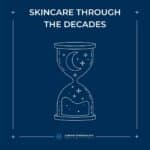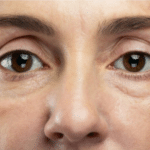In recent years, injectable treatments have revolutionized the field of dermatology and cosmetic medicine, offering non-surgical solutions for a wide range of aesthetic concerns. From reducing wrinkles to enhancing facial contours, injectables have gained popularity for their effectiveness and minimal downtime. In this guide, we’ll demystify some of the most common injectables, including neuromodulators, fillers, Sculptra, PRP (Platelet-Rich Plasma), and Kybella, to help you understand their uses, benefits, and what to expect from each treatment.
1. Neuromodulators (e.g., Botox, Dysport, Xeomin)
Neuromodulators are injectable substances that work by temporarily relaxing specific facial muscles, thereby reducing the appearance of wrinkles and fine lines. Brands like Botox, Dysport, Xeomin, and Daxxify are commonly used for this purpose.
Benefits: Neuromodulators are highly effective at treating dynamic wrinkles caused by repetitive facial movements, such as frown lines, forehead lines, and crow’s feet. Treatments are minimally invasive, with results typically lasting three to four months.
2. Fillers
Fillers are injectable gels used to restore volume, enhance facial contours, and reduce the appearance of wrinkles and folds. They come in various formulations but most often include hyaluronic acid, which is a naturally produced substance in the body that binds to water.
Benefits: Fillers can add volume to areas that have lost fullness due to aging or genetics, such as the cheeks, lips, and under-eye area. They can also soften facial lines and wrinkles, resulting in a more youthful appearance. Results typically last anywhere from six months to two years.
3. Sculptra
Sculptra is an injectable made from poly-L-lactic acid, which works by stimulating the body’s natural collagen production, gradually restoring volume and improving skin texture over time.
Benefits: Sculptra offers gradual, long-lasting results that can last up to two years or more. It is particularly effective for adding volume to larger areas of the face, such as the cheeks and temples, and can improve the appearance of wrinkles and fine lines.
4. PRP (Platelet-Rich Plasma) for Hair Loss
PRP is a natural treatment derived from the patient’s blood. It involves extracting a small amount of blood, processing it to isolate platelets and growth factors, and then injecting it back into the scalp to stimulate hair growth and prevent further hair loss.
Benefits: PRP for hair loss is known for its regenerative properties, promoting hair growth, improving hair density, and slowing down hair thinning. It is a safe and natural treatment with minimal risk of adverse reactions.
5. Kybella
Kybella is an injectable treatment designed to reduce submental fullness, commonly known as a “double chin.” It contains synthetic deoxycholic acid, which helps the body break down and absorb fat cells.
Benefits: Kybella offers a non-surgical solution for reducing excess fat under the chin, resulting in a more defined jawline and improved facial profile. Results are permanent, as treated fat cells are permanently destroyed and eliminated by the body.
Injectable treatments offer versatile solutions for enhancing your appearance with minimal downtime. Consultation with a qualified dermatologist or cosmetic surgeon is essential to determine the most suitable treatment plan tailored to your individual needs and goals.







 Naptown Music Feast 2024
Naptown Music Feast 2024